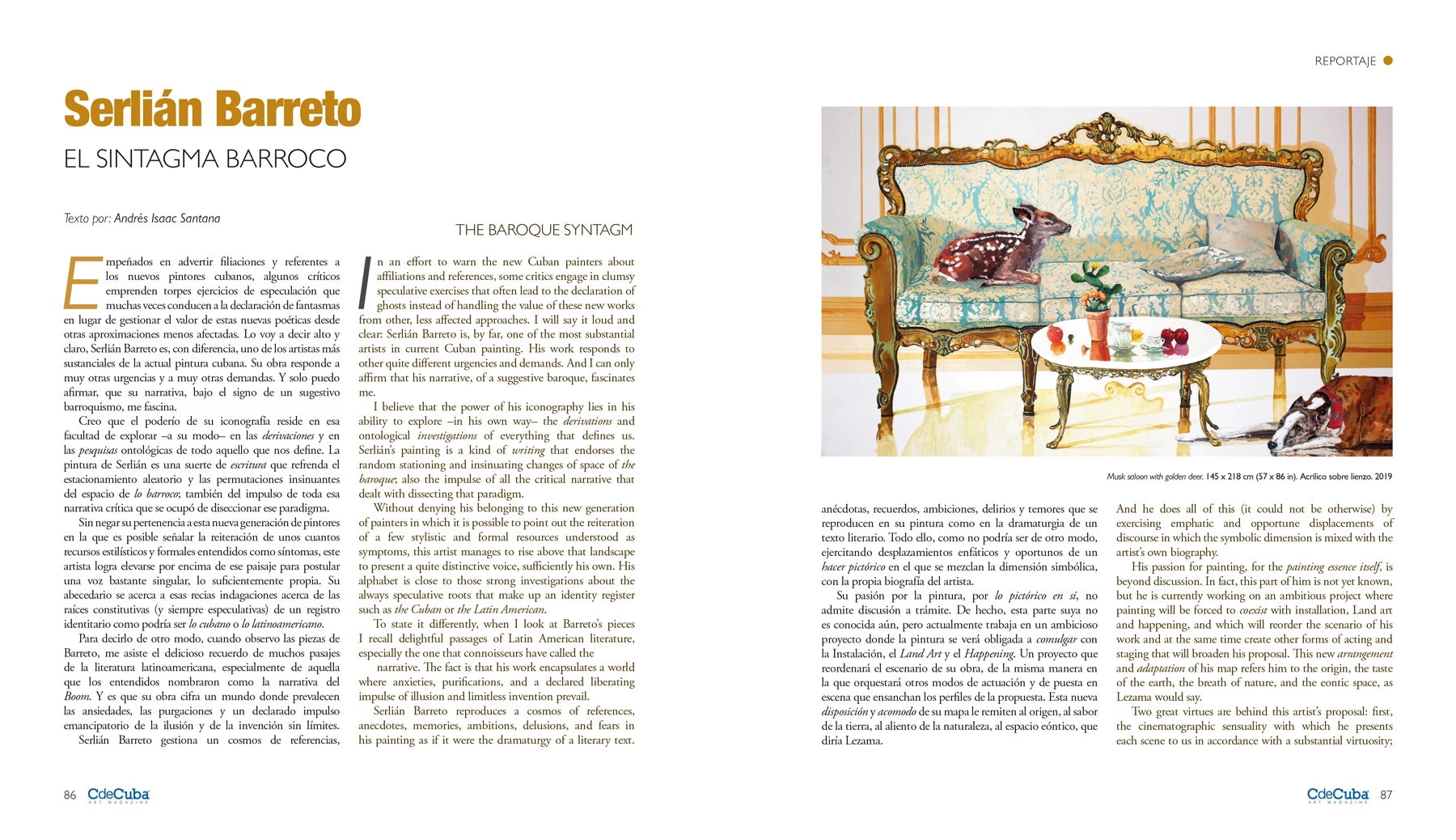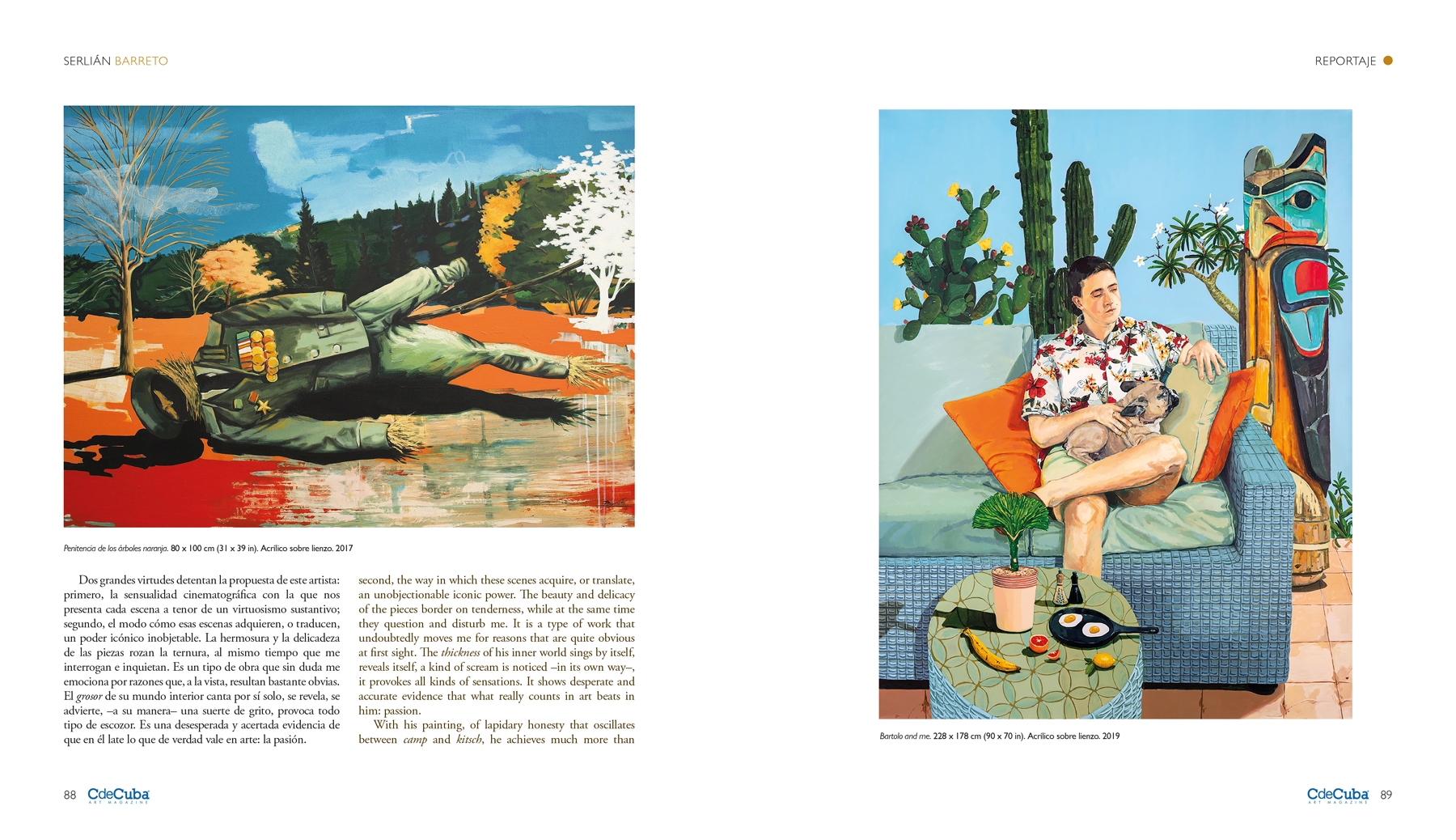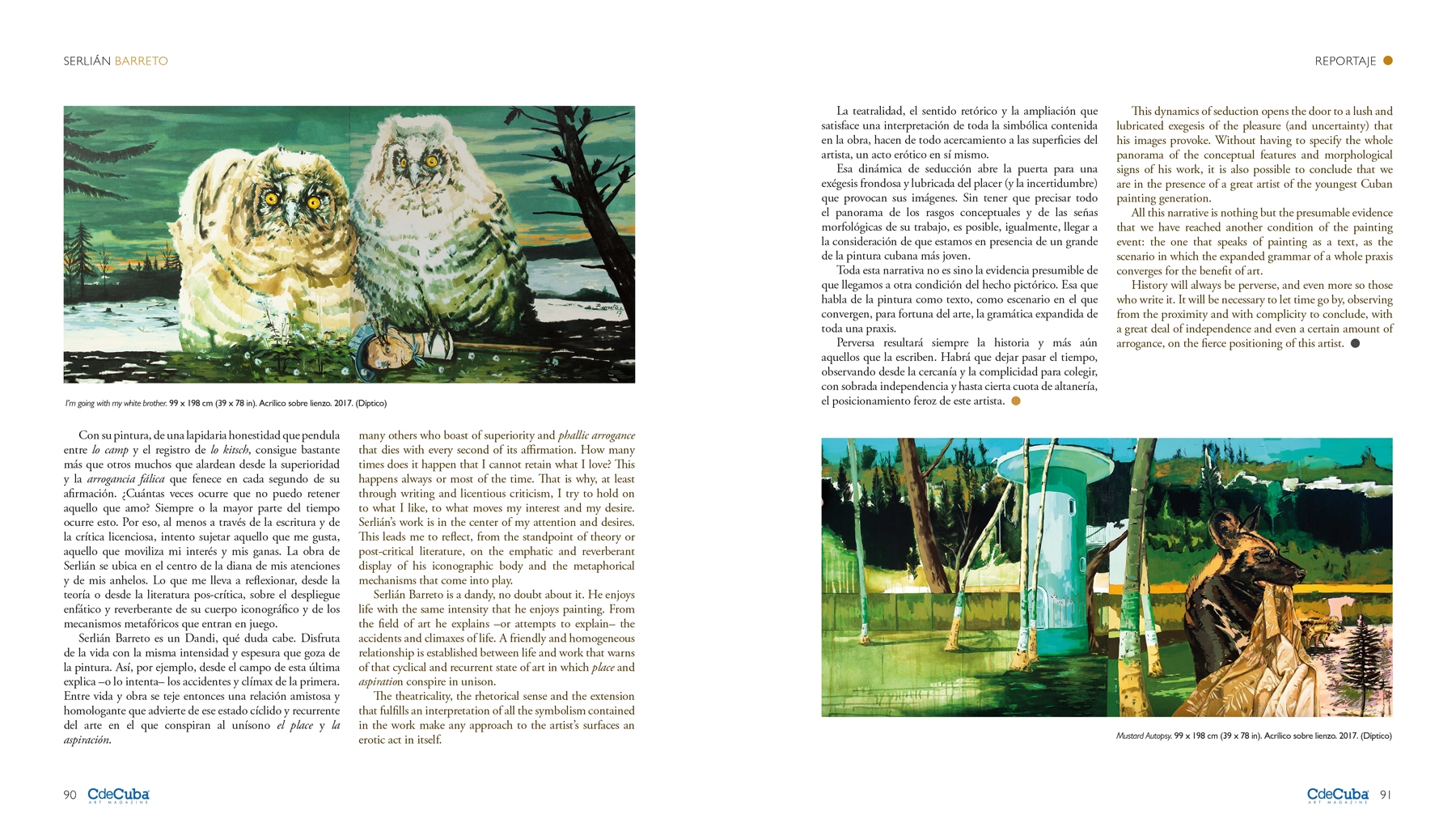The Baroque Syntagm
By Andrés Isaac Santana
“The meanings in painting that cannot be verified in images
and cannot be easily spoken
to the visual languages and to the more specifically pictorial (…)”
Alberto Carrere y José Saborit
In an effort to warn the new Cuban painters about affiliations and references, some critics engage in clumsy speculative exercises that often lead to the declaration of ghosts instead of handling the value of these new works from other, less affected approaches. I will say it loud and clear: Serlián Barreto is, by far, one of the most substantial artists in current Cuban painting. His work responds to other quite different urgencies and demands. And I can only affirm that his narrative, of a suggestive baroque, fascinates me.
I believe that the power of his iconography lies in his ability to explore -in his own way- the derivations and ontological investigations of everything that defines us. Serlián’s painting is a kind of writing that endorses the random stationing and insinuating changes of space of the baroque; also the impulse of all the critical narrative that dealt with dissecting that paradigm.
Without denying his belonging to this new generation of painters in which it is possible to point out the reiteration of a few stylistic and formal resources understood as symptoms, this artist manages to rise above that landscape to present a quite distinctive voice, sufficiently his own. His alphabet is close to those strong investigations about the always speculative roots that make up an identity register such as the Cuban or the Latin American.
To state it differently, when I look at Barreto’s pieces I recall delightful passages of Latin American literature, especially the one that connoisseurs have called the boom narrative. The fact is that his work encapsulates a world where anxieties, purifications, and a declared liberating impulse of illusion and limitless invention prevail.
Serlián Barreto reproduces a cosmos of references, anecdotes, memories, ambitions, delusions, and fears in his painting as if it were the dramaturgy of a literary text. And he does all of this (it could not be otherwise) by exercising emphatic and opportune displacements of discourse in which the symbolic dimension is mixed with the artist’s own biography.
His passion for painting, for the painting essence itself, is beyond discussion. In fact, this part of him is not yet known, but he is currently working on an ambitious project where painting will be forced to coexist with installation, Land art and happening, and which will reorder the scenario of his work and at the same time create other forms of acting and staging that will broaden his proposal. This new arrangement and adaptation of his map refers him to the origin, the taste of the earth, the breath of nature, and the eontic space, as Lezama would say.
Two great virtues are behind this artist’s proposal: first, the cinematographic sensuality with which he presents each scene to us in accordance with a substantial virtuosity; second, the way in which these scenes acquire, or translate, an unobjectionable iconic power. The beauty and delicacy of the pieces border on tenderness, while at the same time they question and disturb me. It is a type of work that undoubtedly moves me for reasons that are quite obvious at first sight. The thickness of his inner world sings by itself, reveals itself, a kind of scream is noticed -in its own way-, it provokes all kinds of sensations. It shows desperate and accurate evidence that what really counts in art beats in him: passion.
With his painting, of lapidary honesty that oscillates between camp and kitsch, he achieves much more than many others who boast of superiority and phallic arrogance that dies with every second of its affirmation. How many times does it happen that I cannot retain what I love? This happens always or most of the time. That is why, at least through writing and licentious criticism, I try to hold on to what I like, to what moves my interest and my desire. Serlián’s work is in the center of my attention and desires. This leads me to reflect, from the standpoint of theory or post-critical literature, on the emphatic and reverberant display of his iconographic body and the metaphorical mechanisms that come into play.
Serlián Barreto is a dandy, no doubt about it. He enjoys life with the same intensity that he enjoys painting. From the field of art he explains -or attempts to explain– the accidents and climaxes of life. A friendly and homogeneous relationship is established between life and work that warns of that cyclical and recurrent state of art in which place and aspiration conspire in unison.
The theatricality, the rhetorical sense and the extension that fulfills an interpretation of all the symbolism contained in the work make any approach to the artist’s surfaces an erotic act in itself.
This dynamics of seduction opens the door to a lush and lubricated exegesis of the pleasure (and uncertainty) that his images provoke. Without having to specify the whole panorama of the conceptual features and morphological signs of his work, it is also possible to conclude that we are in the presence of a great artist of the youngest Cuban painting generation.
All this narrative is nothing but the presumable evidence that we have reached another condition of the painting event: the one that speaks of painting as a text, as the scenario in which the expanded grammar of a whole praxis converges for the benefit of art.
History will always be perverse, and even more so those who write it. It will be necessary to let time go by, observing from the proximity and with complicity to conclude, with a great deal of independence and even a certain amount of arrogance, on the fierce positioning of this artist.






